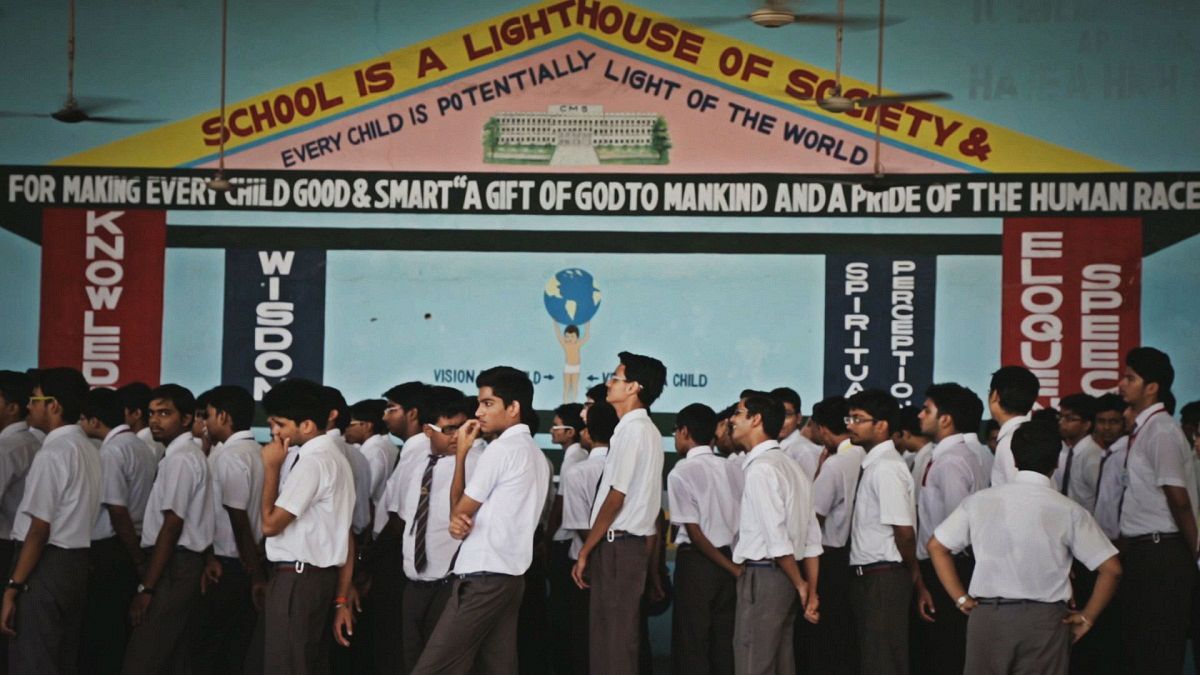What makes parents and students prefer one school to the other? Good teaching is obviously a basic requirement, but what other qualities make a school special?
We explore two extraordinary schools. The first is the City Montessori School (CMS) in Lucknow, Uttar Pradesh, India. With more than 48,000 pupils, this school is one of the largest in the world. It is also a top ranking one. Why is it so popular? And how does it manage to achieve so much in terms of educational achievement?
The CMS story began 54 years ago with five students and a loan of less than €5. Today the school’s students are scattered across 20 campuses in the city. The two largest have 7,000 students each.
Jagdish Gandhi, Founding Director, CMS told euronews: “54 years ago, I started this school on 1 July 1959. The kind of education being given to the children was only material.
“But I realised, that man has three realities of life. Man is a material being. Man is a human being and man is a divine being. He needs a balanced education of all the three realities of life. Therefore, I started this school with a mission to impart a balanced education to the children.
“After beating the drum for 15 days in my locality where I started my school at Station Road, nobody came forward to admit a child. Then on the 15th day, I wept and cried before god ‘Oh god, no child is coming’,” he said.
Today, a lack of students is the least of Dr Gandhi’s worries. CMS is the most sought after school in the city. From children of government ministers to the underprivileged who come on fee concessions – all are welcome here.
More about CMS: http://www.cmseducation.org/guinness/
Where more is better: http://www.tes.co.uk/article.aspx?storycode=6323231
More about UNESCO’s prize: http://www.unesco.org/bpi/eng/unescopress/2002/02-41e.shtml
We left the city behind and found our second school in a more remote location. How can education reach people who live in isolated areas? In mountains for example? And if it can, what about communication with the outside world? Is it possible to access the internet, for example? Let’s see how some dedicated teachers are tackling these challenges.
In remote northwestern Argentina, a couple of teachers are living and working in a very special environment. They live in the heights of the mountains of Salta province where they teach and graze guanacos.
On the morning of our visit, one of the school directors left the hamlet of Rio Grande with his guide. They loaded their donkeys with food and equipment to bring to a small school lost in the clouds, where Alejo has been teaching for the last 20 years. The rocky path they walk is the only way to get to the school. The only mode of transport is donkey.
In Sala Esculla, every morning, the school children pay respect to the nation’s flag, a tradition in Argentina. The pupils, aged from 5 to 15 years old, live at schools together, from Monday to Friday.
In these mountains, the little school has to adapt to challenging climate conditions, like winds that are so strong that they loosen the roof.
Although living and studying with little means, the school has been connected to the internet since 2009 with some help from Aprendiendo Bajo la Cruz del Sur. The children now have everything they need at their fingertips.
Living in the harsh mountain conditions, where the nearest doctor is a ten-hour walk away, is difficult. The internet is essential. The school has been on-line since 2009. It has helped save lives on more than one occasion when doctors have provided first aid instructions to teachers over the internet.
More about Sala Esculla school:
http://www.youtube.com/watch?v=Ai2klmRjLPE
http://www.facebook.com/media/set/?set=a.187624237489.127591.185295252489
300 kilometres to the south of the school, next to the Andes Mountains, is the city of Salta, capital of the province. Claudia Gómez Costa, president of the Aprendiendo Bajo la Cruz del Sur foundation, and her husband have been leading the internet initiative.
She told euronews: “In 2009 when we connected the internet to Sala Esculla’s school, I came by helicopter. And when you see the children from the air, getting out, moving their arms, and see that they are waiting… so much excitement in these little faces… these innocent eyes opened… really it is really strong, and you feel that this small thing one can do is worth it.”
So what was your school like? Was it special? Share your experiences with us via our social media pages.
